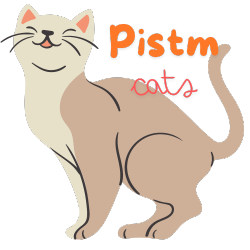When most people think of adopting a cat, they likely envision a cute, cuddly kitten or a young, healthy adult cat. However, there is another population of cats in need of homes – special needs cats. These are felines who, due to various physical or medical challenges, require a little extra care and attention. Despite their challenges, many special needs cats lead happy and fulfilling lives, bringing joy to their owners and proving that a disability doesn’t define them. This is evident in the stories of several special needs cats who have overcome their obstacles and thrived.
Take, for instance, the story of Lil Bub. Born with a rare bone disorder, Lil Bub became an internet sensation, charming people worldwide with her unique appearance and playful personality. Despite her small size and physical limitations, she lived a full and happy life, even earning the title of “Spokescat” for the ASPCA, advocating for special needs pet adoption. Sadly, Lil Bub passed away in 2019, but her legacy continues to inspire people.
Then there’s the story of Monty, a cat born with a severe underbite and a range of health issues, including a heart murmur and asthma. Despite his challenges, Monty brings joy to his owners and has become a social media star, with his playful personality and unique appearance captivating fans worldwide. Monty’s story shows that special needs cats can lead happy and healthy lives, bringing love and laughter to their families.
Another inspiring tale is that of Stella, a blind cat rescued from a hoarding situation. Despite losing her sight, Stella adapted incredibly well to her new environment and quickly learned to navigate her surroundings using her other heightened senses. With the help of her owners, she even started playing fetch, running and jumping with ease, proving that blindness doesn’t hold her back.
Stories like these highlight the resilience and adaptability of special needs cats. They demonstrate that, with love and dedication, these felines can overcome their challenges and bring immense joy to their owners. Adopting a special needs cat may seem daunting, but the rewards are immeasurable. These cats teach us about perseverance and unconditional love, enriching our lives in ways we never thought possible.
There’s Mr. Wapples, a cat with cerebellar hypoplasia, who has become an ambassador for special needs pets, showing that a little wobble doesn’t define him. He loves playing with his cat siblings and even goes on walks on a leash, enjoying the outdoors like any other cat. Mr. Wapples’ playful spirit and determination to live life to the fullest inspire his large online community.
Similarly, Wheelz the cat doesn’t let her paralysis hold her back. After an accident left her unable to use her back legs, Wheelz quickly adapted to life with a wheelchair. She zooms around with energy and enthusiasm, playing and exploring with her foster siblings. Wheelz’s foster mom, a veterinarian, helps care for her, ensuring she stays happy and healthy while awaiting her forever home.
These cats and many others like them embody the spirit of resilience and the power of overcoming adversity. They serve as a reminder that special needs should never be a barrier to love and companionship. Their stories not only inspire us but also encourage more people to consider adopting these wonderful cats, giving them the loving homes they deserve.
Special needs cats have a lot to offer, and their challenges often pale in comparison to the love and joy they bring to their owners’ lives. With proper care and dedication, these felines can thrive and show us that disability does not define an individual’s worth or potential for happiness. So, the next time you think of adopting a cat, consider opening your heart and home to a special needs feline – the rewards will surely exceed your expectations.
These cats are living proof that determination and love can overcome any obstacle. They inspire not only cat lovers but anyone facing challenges in their lives. Their stories showcase the power of resilience and the ability to adapt, teaching us valuable lessons about perseverance and embracing life with open arms.
So, let the tales of these incredible cats remind us that no matter the difficulties we face, there is always the potential to rise above and lead fulfilling, joyful lives. Their unwavering spirit and capacity for love serve as a beacon of hope, encouraging us to embrace life’s challenges head-on, just as they have done.
Lastly, sharing the stories of special needs cats who have overcome their challenges serves a greater purpose. It not only celebrates their triumphs but also raises awareness and encourages more people to consider adopting these wonderful felines. Shelters are often filled with cats who, due to their unique needs, may be overlooked by potential adopters. By shedding light on their resilience, we can help dispel misconceptions and show that these cats are more than their disabilities.










